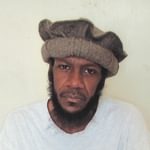
Six detainees charged with capital crimes are currently being held at the U.S. Naval Base military prison in Guantánamo Bay, Cuba. Much of the information relating to these cases is classified and all the participants in the cases — prosecutors, defense lawyers, and court personnel — are required to have top secret security clearance. As a result, significant portions of the proceedings — including court motions and decisions — are heavily redacted or kept secret from the public. In addition, the cases involve highly classified information about the use of torture to extract confessions and obtain information. In 2014, the U.S. Senate Select Committee on Intelligence declassified some of the information relating to the interrogation techniques used by the CIA against detainees. The Committee’s report—which has come to be known as known as “The Torture Report” — details the use of physical, psychological, and sexual torture techniques during custody and in interrogations. The use of these techniques has led to legal challenges brought by defense attorneys, both with respect to the use of evidence obtained through torture and to the legitimacy of the military commissions themselves.
In 2017, Abd al Rahim al Nashiri filed a petition for writ of certiorari in the U.S. Supreme Court asking it to review the legality of the military commissions and the military’s authority to even try his case. On October 16, 2017, the Supreme Court denied the petition, declining to review the issue.
Below is the list of the prisoners housed at Guantánamo Bay who we know are facing capital prosecution by the Department of Defense through military commission — a specific type of trial proceeding used by the military when prosecuting individuals charged with war-related crimes. (For more information on military commissions, see A look at the Guantanamo military commission, Associated Press, May 12, 2012; Military Commissions, New York Times.)
DETAINEES CHARGED WITH 9/11 ATTACKS
Five prisoners are facing capital charges related to the attack on the United States that occurred on September 11, 2001. They were first charged before a war court at Guantánamo Bay in February 2008, and the U.S. indicated that it would seek the death penalty against the prisoners. They were later indicted on December 14, 2009, in the Southern District of New York, where they were to be tried in the federal courts. But the following year, in December 2010, the U.S. Congress enacted a law that would prevent funding to transfer the defendants to the United States, even to face prosecution. For that reason, on April 4, 2011, the Attorney General sought dismissal of the indictment in federal court and referred the case to the Department of Defense so that the defendants could be prosecuted by a military commission. They were arraigned on May 5, 2012, before a military court in Guantánamo Bay. Since that time, defense counsel have raised concerns about their ability to fairly represent the defendants because of delays in security clearances, the strict limitations imposed on communications, limitations on access to and ability to interview government’s witnesses, and illicit monitoring of attorney-client privileged communications. The five detainees have not yet been tried, and it is unclear when a trial date will be set.

(1) Khalid Shaikh Mohammed. Mohammed, who the government has alleged is the mastermind behind the 9/11 attacks on the U.S., was captured in Pakistan in March 2003 and immediately turned over to the U.S. In September 2006, the U.S. indicated that Mohammed had been in a secret location but was being transferred to Guantánamo Bay. In February 2008, the CIA director Gen. Michael V. Hayden confirmed that waterboarding had been used when interrogating Mohammed.

(2) Walid bin Attash. Bin Attash was arrested in Pakistan in April 2003 for his suspected involvement in the bombing of the USS Cole. He was transferred to Guantánamo Bay in September 2006. In April 2017, lawyers for bin Attash sued the Department of Defense alleging that the military has exposed the defense team to elevated risks of cancer due to environmental hazards at the prison complex.

(3) Ramzi bin al-Shibh. Bin al-Shibh was captured in Pakistan in September 2002, where he was tortured during interrogation and remained in an undisclosed location until September 2006, when he was transferred to Guantánamo Bay. His psychiatric condition has been questioned, and almost a dozen experts have confirmed a diagnosis of delusional disorder, which appears to stem from the extreme physical and psychological torture he suffered while being interrogated — torture that included being “chained naked to the ceiling, deprived of sleep for more than 72 hours at a time, and subjected to long stretches of darkness, cold temperatures and persistent loud music.” In April 2014, it was revealed that the FBI believed a defense team member’s 2013 good luck wish to one of Bin al-Shibh’s cousins was a “coded” message and tried to “turn the member of Bin al Shibh’s defense team into a confidential informant,” causing defense counsel to seek delay of trial and ask for investigation into the actions of the FBI.

(4) Ali Abdul Aziz Ali (AKA, Ammar al Baluchi). The nephew of Khalid Shaikh Mohammed, al Baluchi was arrested in Pakistan in April 2003, and transferred to Guantánamo Bay in September 2006. While he was being interrogated, CIA officials “forcibly kept his head under the water while he struggled to breathe and beat him repeatedly, hitting him with a truncheon-like object and smashing his head against a wall.” In March 2017, his attorneys asked the judge to order the government to turn over information related to their client’s detention and interrogation and are seeking to have any confessions excluded from trial.

(5) Mustafa al Hawsawi. Hawsawi was captured in Pakistan in March 2003, and transferred to Guantánamo Bay in September 2006. Before he was transferred, like other prisoners, he was interrogated and tortured. The torture he endured included sodomy, which affected him so badly that he has to “manually reinsert parts of his rectal cavity” in order to have a bowel movement. During a hearing in October 2016, a defense attorney indicated that Hawsawi would be undergoing surgery to correct the problem that has caused him anal bleeding for more than a decade.
DETAINEE CHARGED WITH BOMBING OF USS COLE

Abd al Rahim al Nashiri is facing capital charges related to the attack on the U.S. naval warship, the USS Cole, on October 12, 2000. Seventeen American servicemen were killed and 39 others were injured in the attack. In November 2002, the U.S. announced that al Nashiri had been captured and was being interrogated in a secret location. On September 29, 2004, after being tried in absentia, al Nashiri was sentenced to death in Yemen. In September 2006, al Nashiri was transferred to Guantánamo Bay, and has remained there since that time. In December 2008, the Department of Defense formally approved war crimes charges against al Nashiri. Those charges, however, were dropped and later reinstated in April 2011. In 2017, his lawyers asked the Supreme Court to allow them to challenge his military detention — and efforts to try him in a military tribunal rather than a civilian court — because the CIA admittedly subjected him to 14 years of “physical, psychological and sexual torture.” On October 16, 2017, the Supreme Court declined to hear the case. On October 13, 2017, al Nashiri’s defense team were allowed to withdraw from the case as a result of ethical concerns arising out of the government spying on their legal meetings and a court order preventing them from discussing the interception of attorney-client communications with al Nashiri.



